
Igor Ivanovich Sikorsky in his second - "American" - life fell in love with mountaineering. He especially loved climbing volcanoes.
It would be a good time to speculate that this hobby reminded him of his own destiny: up, down, up again, to the abyss, which, just about, just look, will spew fire ...
He himself believes that he made the first big mistake in his life , yielding to the persuasions of his father and went to study in the naval cadet corps, following his older brother.
For some reason, then this decision to a sickly boy from land Kiev, who loved all kinds of mechanisms, seemed right.
Actually, everyone in life makes mistakes, but it is not the mistakes themselves that are important, but the ability to understand them and react to them.
Sikorsky reacted three years later: he left the cadet corps with a fully formed goal - he wanted to become an engineer.
What has been a lot in the character of our hero says - because the vast majority of people who have committed such a mistake (in education, profession or personal life) and live their whole lives with it, cursing his unfortunate fate and nasty volatile fortunes ...
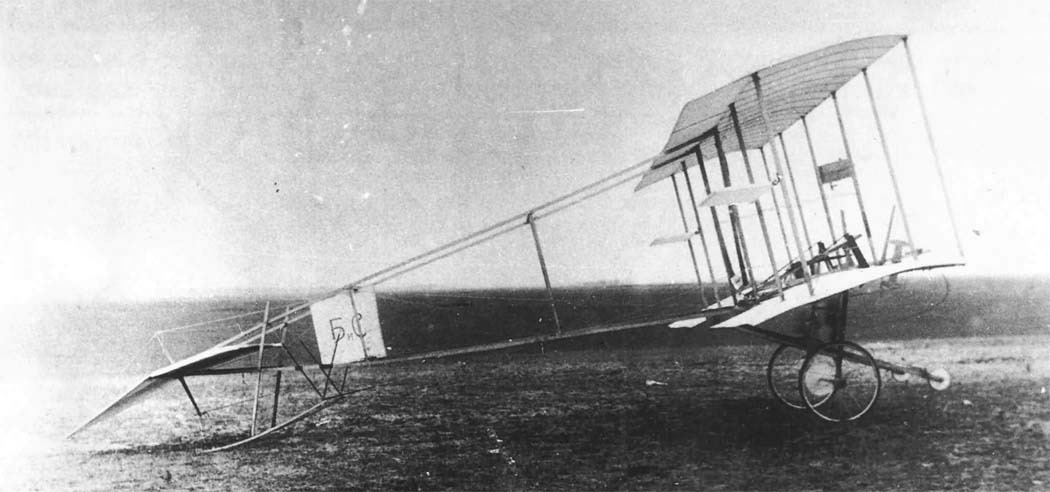
Plane bis-1 ( Bylinkin and Sikorsky) - the first development by Igor Sikorsky, with co-author.
Studying did not work out right away - in Russia that year, the students were not particularly interested in studying, the reaction of 1907 raged, and Igor's father decided that his youngest son should still study in Paris.
And in Paris - about happiness! - he enters the Duvignau de Lanno school, where almost everyone around him was literally sick with aviation and dreamed of flying. Actually, our hero easily and with great pleasure "became infected" with this passion, having become close to one of the very first (and successful) aircraft manufacturers in Europe - the Frenchman Farber, after communicating with whom Sikorsky has a mountain of abstracts.
Six months later, he returned to Kiev, entered the Polytechnic Institute, where he was again lucky with teachers - here both Zhukovsky's student Artemiev and the famous mathematician Delone-Sikorsky became a member of the aeronautics circle they had created.
The star of the circle was at that time Fyodor Bylinkin, famous for having created an exact copy of the Wright brothers' aircraft: it was beautiful, but it just did not fly. That did not diminish the authority of Bylinkin in the eyes of his associates.
In 1908, Igor and his father went to Germany, and all of Germany only talks about the brilliant Wright brothers (they have just a "tour of Europe"). The impressed Sikorsky, rethinking what he read and seen, creates his first model of a helicopter, right on the table in a hotel room - alas, the car does not rise into the air.
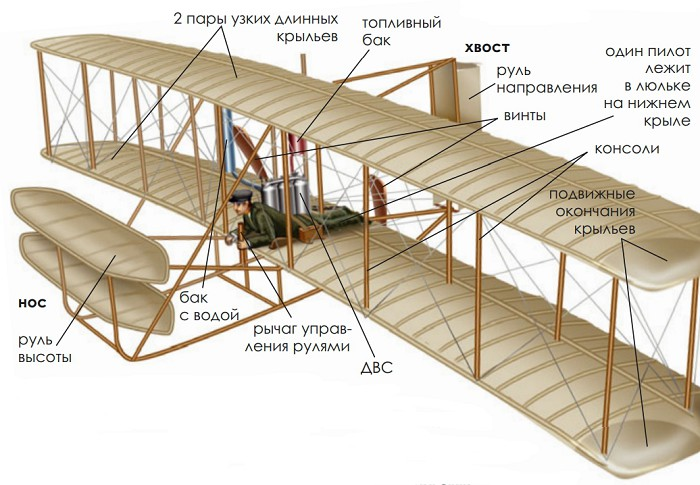
Biplane by the Wright brothers.
Returning to Kiev, he demonstrates remarkable business qualities, finding an investor: his sister Olga is ready to sponsor the development of the helicopter.
As a result, its development takes off from the ground, but it cannot withstand the weight of a person, there is not enough engine power.
And Sikorsky switches to airplanes, spending most of his time in the above-mentioned student circle.
The students and teachers did not have enough knowledge - and there was nowhere for them to come from, but enthusiasm was over the edge.
In 1910, Bylinkin, Sikorsky and Vasily Jordan, an irreplaceable handyman, created their first airplane - BIS-1, named after the first letters of the authors' surnames.
Alas, again there is not enough engine power, and the plane, like Bylinkin's creation, remains on the ground.
Bitter disappointment, but Sikorsky knows how to work on mistakes, and his second aircraft, created in 1910, BIS-2, flies!
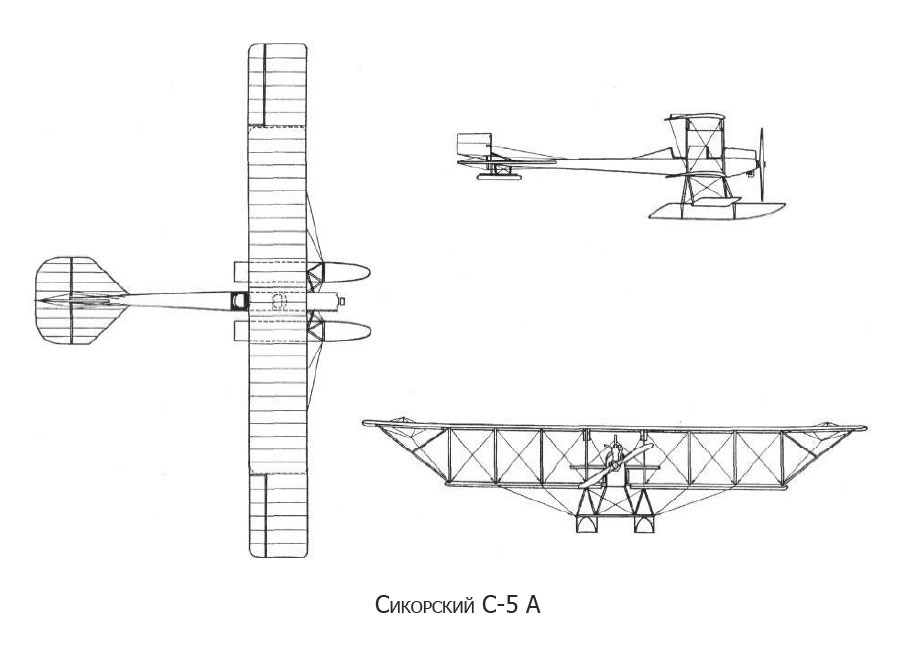
C5a, a fairly perfect model of an airplane for its time, on which Sikorsky set a number of world records.
And how it flies, almost no worse than the miracle of the Wright brothers - it flew 600 meters and stayed in the air for 42 seconds. I must say that this brilliant achievement was preceded by a series of falls and breakdowns, but Sikorsky not only survived, but also "taught to fly" his plane.
He will receive a pilot's diploma only a year later, not being much distracted from the creation of new, more advanced models.
His C-5 amazes even the emperor, who sees him flying during maneuvers and grants an audience to the designer.
The S-5 is already maneuvering at an altitude of about 500 meters, its flight range is 82 km, and its speed is 125 km / h.
The first flight already seems to Sikorsky himself a distant past, although a little more than a year has passed since its date ...
Sikorsky is already breaking world records on his C-6, but difficult competitive tests, which cost the young man, according to his memories, incredible nerves, does not always win - narrow then the world of aviators is full of rumors about the intrigues of competitors, bribes, sabotage ...
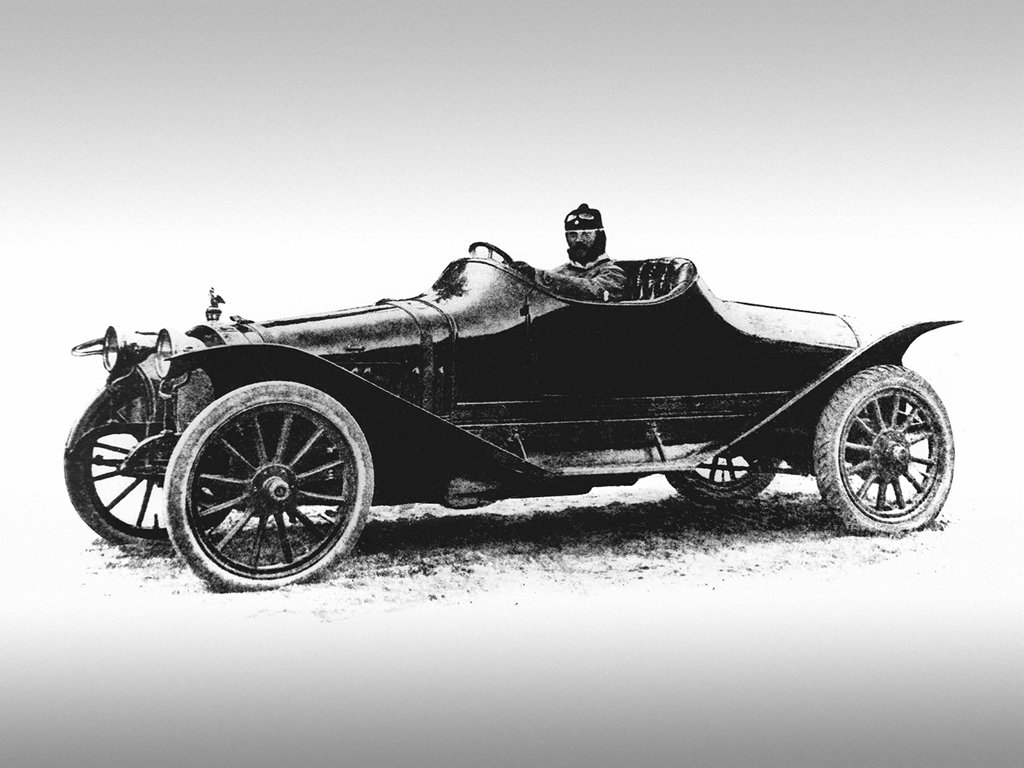
General Shidlovsky at the wheel of one of the top models of the Russo-Balt car.
In 1911, he met the chairman of the board of directors of RBVZ (Russian-Baltic repair plant, based in Riga, but already had a branch in St. Petersburg) General Shidlovsky, and he offered 23-year-old Sikorsky the post of chief engineer of the aviation department of Russo-Balt.
By that time, Russo-Balt was already gaining modest experience in aircraft construction, releasing a small number of Farman and Newports under license.
The ideas of Shidlovsky and Sikorsky are incredible: they plan to create a multi-engine giant aircraft with a closed cockpit. Intensive work of 1912-1914 ends with the release of two models: "Russian Knight" and, a more advanced aircraft that brought its creator worldwide fame - "Ilya Muromets".
At the same time, the name of Sikorsky becomes the subject of obstruction - no, Igor Sikorsky is the glory and pride of the country, his "Ilya Muromets", which amazed his contemporaries (almost 100 copies of him will be released), is amazing, but the story with his dad ...

Sikorsky was often reproached for the fact that he is at work all the time and does not rest at all. This, of course, is not true. Here - he rested, the snowmobiles made by him testify to this. You can get back to business.
Our hero's father is modestly mentioned, as a rule, as a "famous Russian psychiatrist" (which is true: in any case, Ivan Sikorsky created several clinics for the mentally ill and wrote a number of scientific works), but they do not mention him as the most active Black Hundreds. This second “I” of him burst out when he was summoned as an expert to the court in the famous “Beilis case”, which Sikorsky Sr. presented as a bloody ritual murder.
His "proofs" were so empty and so obviously contrived that the scientific world later regarded him as a swindler. However, the reaction of science is one thing, but in other strata of the population its "evidence" fell on a completely different soil: mass Jewish pogroms began throughout the country, the obvious reason and fault of which was the "expert psychiatrist" Sikorsky.
Igor Sikorsky experienced this, according to the recollections of his contemporaries, extremely painful, General Shidlovsky even had to speak publicly in defense of the young man.
A certain scar in the soul of Igor Sikorsky, however, will remain: he will consider his fair indignation towards his father biased and in the future will emphasize all his life that he wants to deal only with Russians and Orthodox Christians, although harsh criticism of the unprofessional his father's behavior.
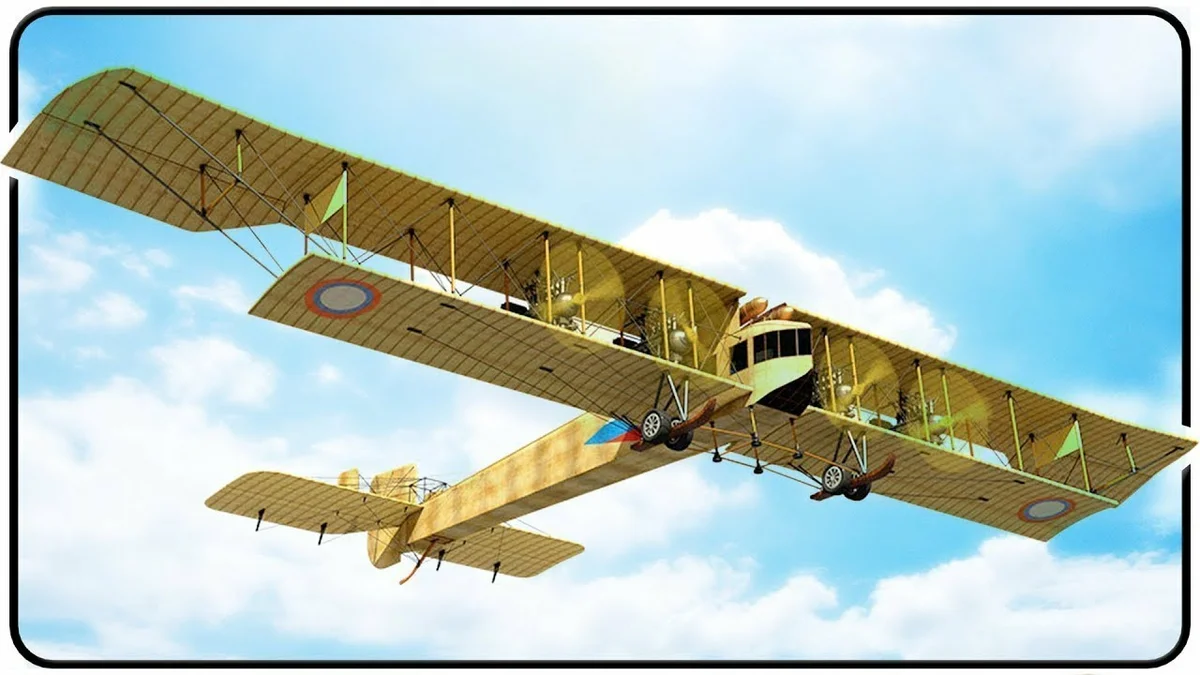
The giant "Ilya Muromets": this construction was said to be ahead of its time. This is true, but it was these ideas of their development, for various reasons, that they got it then.
The First World War begins, Sikorsky's planes dominate the air, but they are not particularly used: it seems that everyone understood that the plane is an effective means for bombing, but the mechanisms for this, and the bombs themselves, did not yet exist.
Brusilov, one of the best generals of that war, spoke of airplanes as completely useless pieces of iron, which are expensive to maintain, but there is no point in them.
As a rule, the pilot threw a grenade from the cockpit, which sometimes exploded before reaching the ground.
Nevertheless, the more far-sighted military understood the prospects for bombing from the air, and Russo-Balt was actively engaged in the release and development of new ideas.
The revolution began, life at the Russo-Balt plant was dying out, although it was still flickering, but, as they say, clouds were gathering ...
In 1919, Sikorsky is saved not by a Russian or an Orthodox Christian: one of the workers of his plant, a Finn, warns Sikorsky that his arrest is being prepared ...
How arrests usually end at that time, Sikorsky knows (his friend and patron Shidlovsky has already been captured): he fled through Murmansk to Paris, where he was trying to find a use for himself.
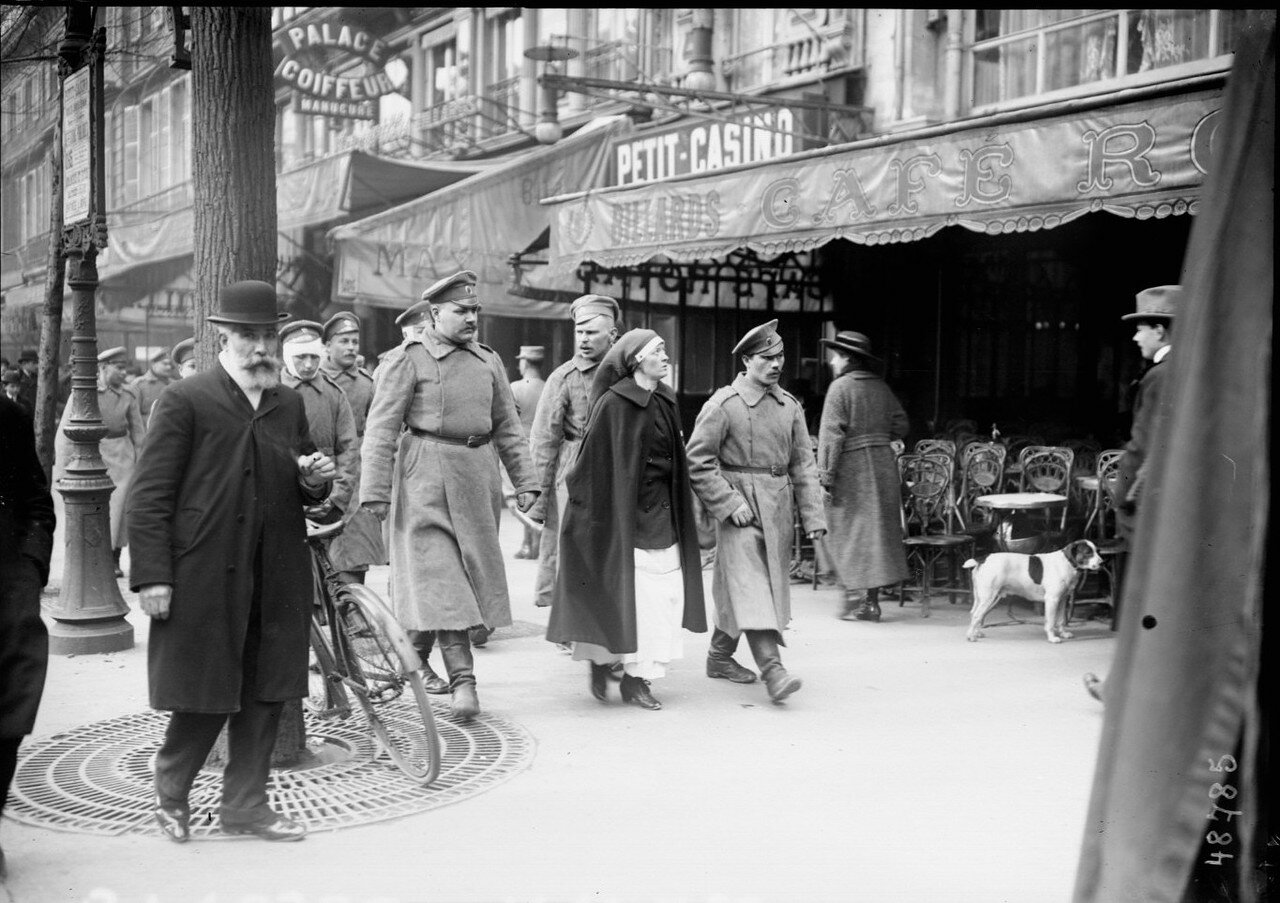
Paris, 1917, Russian emigration. "Gentlemen are all in Paris ...". However, not only gentlemen ...
Alas, the timing is very unfortunate: the recognized genius of aircraft engineering falls into that time period when the war is over and there is no longer a demand for bombers, and civil aviation does not yet exist, and there is still no demand for large aircraft.
He makes an excellent development in France ("an aircraft capable of dropping a bomb weighing a ton") - but the aircraft does not go into production, military tasks are no longer paramount.
Sikorsky, hoping to find a job, moves to New York, but, alas, things are no better here either. His attempts to get a job as an aircraft designer from the US government last for a long time, but they do not end with anything, and Sikorsky makes a living teaching mathematics and astronomy and ... there is a complete feeling that everything is with aircraft construction ... The point in an engineering career.
Probably, for someone, such a collapse could become a point, but not for Sikorsky, for whom ups and downs are his usual life cycle.
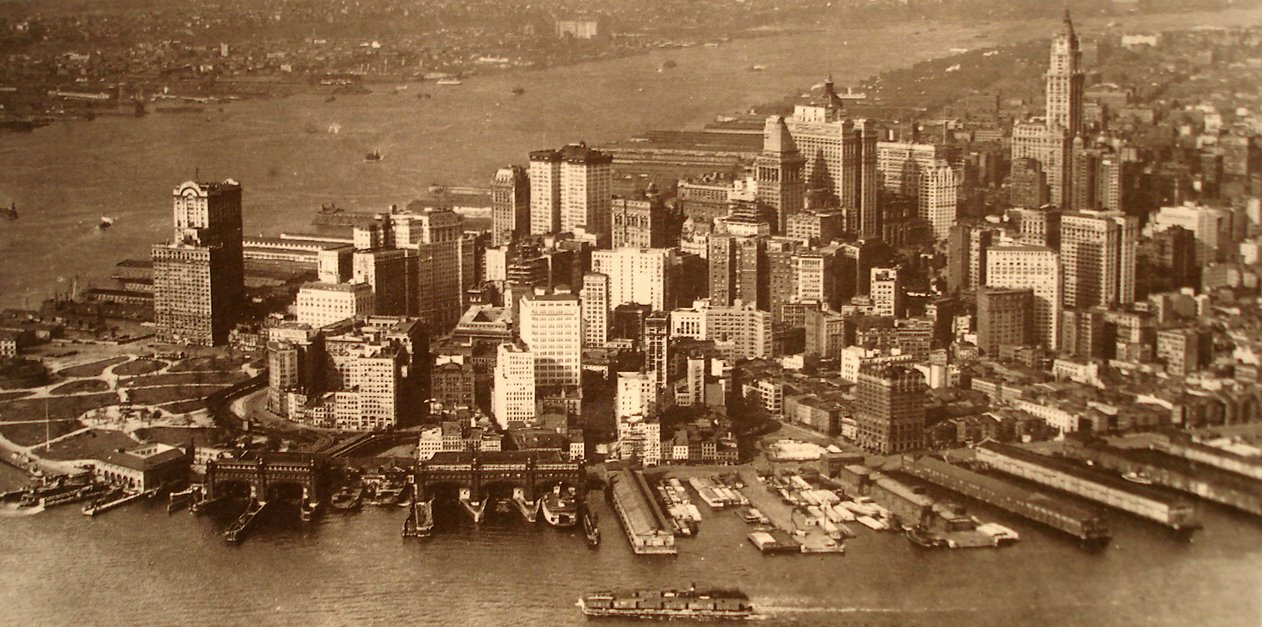
New York, 20-year. last century.
In 1923 Sikorsky created the Sikorsky Aero Engineering Corporation. The company does not have any funds at all, Russian emigrants invited by Sikorsky work for free, the place of work is a former chicken coop, rather wobbly and leaky, parts for the first planes are bought at sales or (more often) collected, literally, from garbage dumps (one of the participants in those events recalls that many nodes they marked as "temporary", because they were collected from inappropriate material), and the main money for the construction of the plane was collected among the expatriate by subscription, and these were more than modest donations.
One day it occurs to Sikorsky to talk to Rachmaninov, the famous composer and pianist. He buys an incredibly expensive ticket to a concert (it seems, $ 20, Rachmaninov is incredibly highly valued) and dreams that the composer will donate two hundred to his cause ... It would be a miracle and the ultimate dream!
As a result, they were able to meet (which is a miracle in itself) and, in fact, they got along: Sergey Vasilyevich invested an incredible $ 5,000 and even took the title of vice president of the company (incredibly beneficial from the point of view of advertising). The business of the newborn aviation concern went straight away ...
Looking ahead, let us say that years later Sikorsky paid Rachmaninov in full, paying both the sum itself and a large interest on it (it is known that Rachmaninov did not set such conditions).
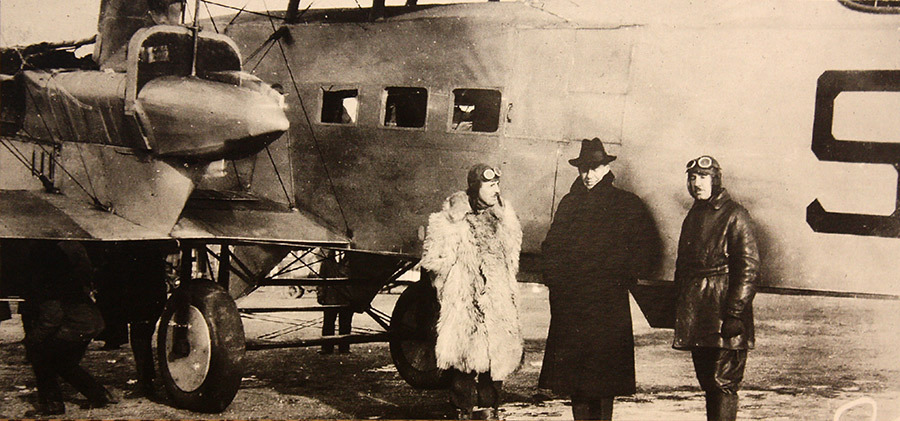
Rachmaninov (center) and Sikorsky (right) at the S-29 transport aircraft.
In 1924, Sikorsky releases the S-29A biplane (oh, everything is not easy either: it falls and almost turns into a pile of garbage on the first flight, but Sikorsky brings it to his senses), which serves him for a long time and “feeds” him, transporting cargo, the whole company. This plane, having served its age, dies heroically: Hollywood buys it out for filming the downed plane.
The year 1926 brings new problems and troubles: the S-35 plane specially created by Sikorsky for the New York - Paris flight falls into a catastrophe, the pilot and mechanic miraculously survive.
And again a miracle: the surviving pilot (Rene Fonck - once again helps out not a Russian or an Orthodox Christian) finds money to finance a new plane. He, unlike the newspapermen who attacked Sikorsky, understands how good this model is, and realizes that the incident that almost cost him his life was an accident.
Alas, Fonck never became the first pilot to cross the Atlantic: in 1927, Charles Lindbergh was ahead of him, and Fonck's collaboration with Sikorsky ended.

Charles Lindbergh, who became an incredibly popular person and a world hero. Sikorsky treated his success philosophically: yes, he crossed the path of his project, but he did a lot more to popularize aviation, and therefore Sikorsky's work, much more than others.
However, this prompted Sikorsky to create amphibious aircraft, where, in the end, he was extraordinarily successful.
In 1928, he released the S-38, which is unconditionally recognized as the best in its class. The small enterprise received orders from the US Department of Defense and Pan America, from Canada and South America, from Europe, moreover, several planes ended up in the Soviet Union (one of them is shown in the Volga-Volga movie). And all this is in quantities that a small plant is unable to fulfill.
Sikorsky builds a new large plant in Bridgeport, increases the staff, organizes an absolutely remarkable production (they speak of him as exemplary), but the Great Depression breaks all plans.
Orders are melting, customers are scattering, previously ordered planes are not sold ...
It would seem that it is a crash again, but, as we already see, Sikorsky is not only a brilliant engineer, he is also an excellent manager - realizing that he cannot save what he has done otherwise, he agrees to sell his company (it is called at that time Sikorsky Aviation) of United Aircraft.

Passengers take seats in the S-40.
As a result, his plant was saved from ruin, and Sikorsky's personal financial situation becomes stable - you can continue to do what you love, there are funds for this.
His customer becomes Pan America, which liked Sikorsky's planes so much, he produces more and more new models that set many world records: in flight range, in weight moved, in speed (by that time, his planes reach speeds of more than 300 km / h ), but the world is particularly amazed by its S-42 Clipper, created in 1934, which flew from America to New Zealand.
In the mid-1930s, when the demand for aircraft improved and, it would seem, Sikorsky would be in demand again, a scandal erupted with one of Sikorsky's models and his competitors. Aviation historians believe that United Aircraft behaved in this story strange and even stupid, as they would say now, "stupidly merged." As a result, Sikorsky himself was on the sidelines in the company and did not take any more part in its affairs.
Disappointment? Of course, how much more! In the end, so many ideas have not been implemented, so many plans.
Probably, for the overwhelming majority of people, this could become a reason for sadness and depression, but certainly not for Sikorsky.
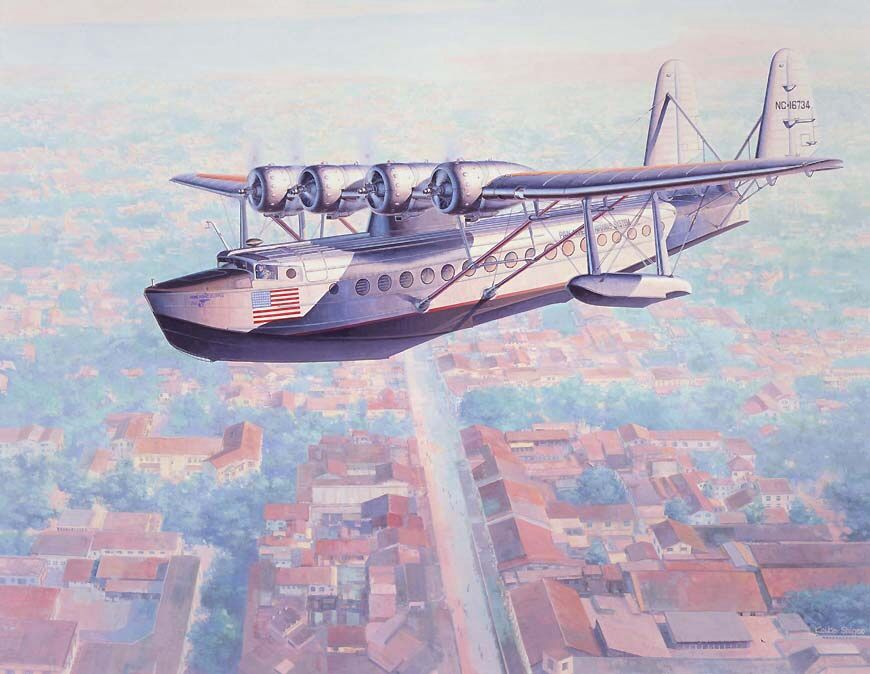
Sikorsky's plane on a United Aircraft advertising poster.
On the contrary, it is with this that the work begins, which, in the end, immortalized the name of the already brilliant inventor - the history of helicopter construction begins.
Actually, even without the helicopter, Sikorsky would have secured a name for himself in history as a great aircraft designer, but resting on his laurels is not in his character at all.
However, it seems that the topic of creating a device, which he began to collect on the table of a Wiesbaden hotel in 1908, never left him, and his forced removal from the "airplane theme" had a beneficial effect on his idea: he got time, but a small resource in terms of human and mechanical, he disposed.
In addition, for some time there was no haste factor, which had poisoned Sikorsky's whole life so much earlier. The management of United Aircraft agreed to "attach to the case" their disgraced aircraft designer, giving the go-ahead for his new project, but not really counting on the result.
The first development of Sikorsky, named VS-300, “learned to fly” for several years.
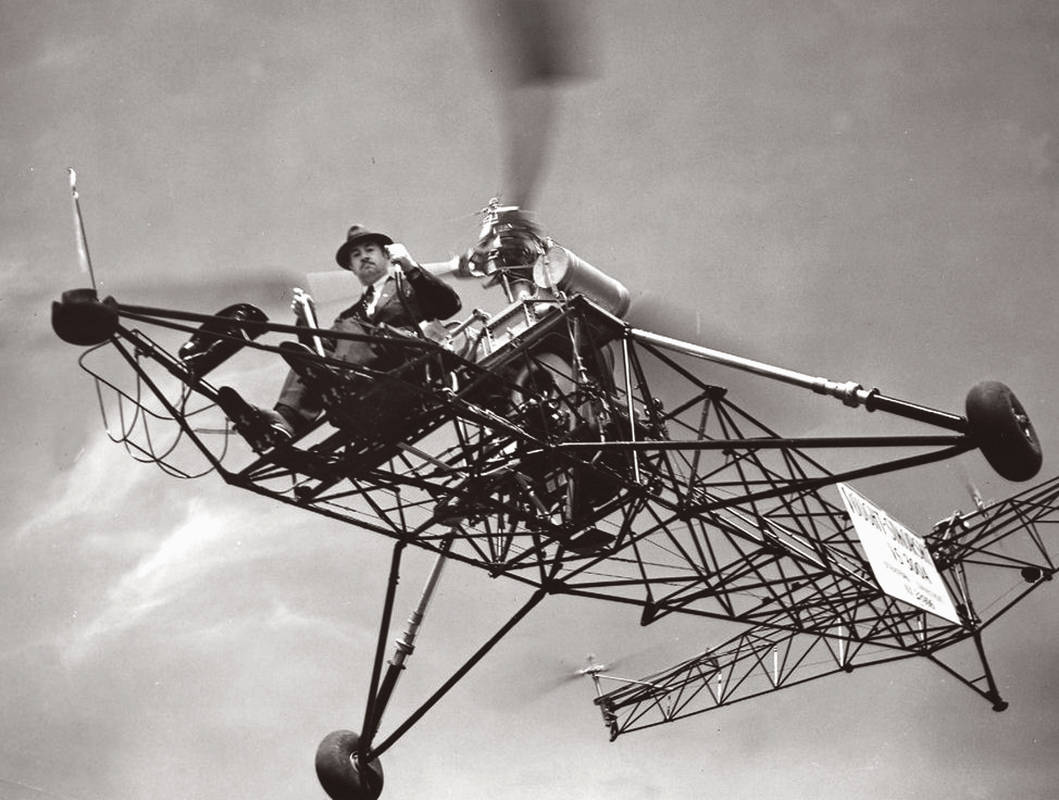
The first model of the Sikorsky helicopter (at the helm of the inventor) takes off from the ground.
The model flew well to and fro and did not want to move forward, which caused a lot of jokes even in the military department, which is very close to Sikorsky.
But Sikorsky is Sikorsky - in just a year he redesigned his helicopter model 18 (!!!) times: about once every 20 days, and his helicopter flew.
The first helicopter, which went down in history as the XR-4 (this is the code name for this model, in "civilian" language - VS-316) took off in mid-January 1942. The military tested it on their own and were quite pleased with the result.
130 of these helicopters were produced, which during the war participated in both military and rescue operations.
In addition, a fairly large number of helicopters (of the next generation) were ordered by the armies of Britain and Canada.
But not only the armies needed a helicopter: the next model of Sikorsky, the S-51, is being purchased by civilian departments, rescuers and the post office.
In the world of aircraft construction, Sikorsky's developments also caused a sensation, and his success dramatically increased competition in this segment. After making sure that a helicopter is a necessary, important and possible business, many companies rush to this segment.

Frank Pyasetsky, a man who has something to be proud of in his life. The rivalry between Sikorsky and Pyasetsky led to a real explosion of ideas in helicopter construction.
However, his only "defeat" in the procurement tenders Sikorsky suffers from his American compatriot, an aircraft designer of Polish origin, the brilliant Frank Pyasetsky (the first model of Sikorsky is ahead of the development of the Pole by only a few months): in 1946, the US Army chooses to buy exactly the Pyasetsky helicopter from - for its best ergonomics and compactness.
The defeat was hard, even economically: to miss such an order is to put an end to subsequent developments, which should have fueled the proceeds from the sale of previous models.
This led to another conflict between Sikorsky and the management of United Aircraft, but ... but defeats always only provoked Sikorsky, and he had something to answer to a competitor.

Handsome S-56. With some changes it works to this day.
He decisively moved towards the creation of powerful helicopters: his S-55 lifted a ton of weight, and the S-56 was already five tons - Pyasetsky lost the segment of heavy helicopters, the demand for which Sikorsky could so successfully foresee, after them the middle class, where reigned model S-58.
In 1957, Sikorsky retired (remaining a consultant in his company until the end of his life).
He led a rather stormy social life, leading various associations of Russians in America - Tolstoy's and Pushkin's societies, contributed to the construction of the Orthodox Church, became interested in philosophy and theology, and even wrote a couple of books on this topic in English, as he dreamed of introducing them to his deeds and thoughts the maximum number of people around him, but he never completely left the development of new machines and mechanisms.

Igor Ivanovich Sikorsky never remained without work in his life.
His fame is so great to this day that in the mass consciousness (and in not too conscientious publications) his name was fixed as “the inventor of the helicopter,” which, of course, is not true.
The path from naked and unsupported youthful enthusiasm to the heights of success, the path of ups and downs, glory and despair - this man has taken a full cup of everything.
One can be surprised at this, but one can consider it a normal and ordinary way for any creator.
Author: Alexander Ivanov
VPS server hosting with fast NVM disks and daily payment. Upload your ISO.
